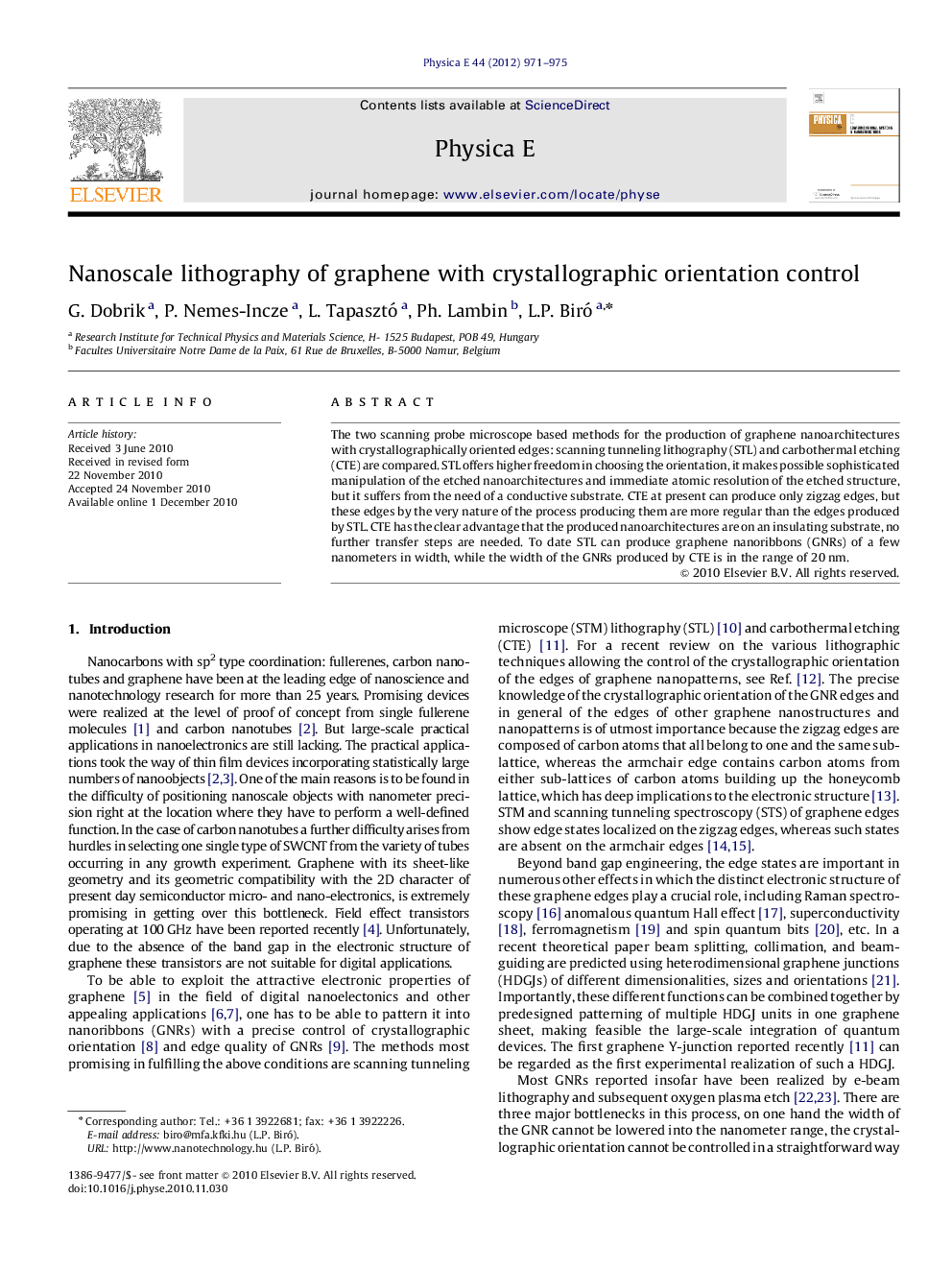| Article ID | Journal | Published Year | Pages | File Type |
|---|---|---|---|---|
| 1544873 | Physica E: Low-dimensional Systems and Nanostructures | 2012 | 5 Pages |
The two scanning probe microscope based methods for the production of graphene nanoarchitectures with crystallographically oriented edges: scanning tunneling lithography (STL) and carbothermal etching (CTE) are compared. STL offers higher freedom in choosing the orientation, it makes possible sophisticated manipulation of the etched nanoarchitectures and immediate atomic resolution of the etched structure, but it suffers from the need of a conductive substrate. CTE at present can produce only zigzag edges, but these edges by the very nature of the process producing them are more regular than the edges produced by STL. CTE has the clear advantage that the produced nanoarchitectures are on an insulating substrate, no further transfer steps are needed. To date STL can produce graphene nanoribbons (GNRs) of a few nanometers in width, while the width of the GNRs produced by CTE is in the range of 20 nm.
Graphical AbstractFigure optionsDownload full-size imageDownload as PowerPoint slideResearch Highlights► Scanning tunneling lithography (STL) and carbothermal etching (CTE) are compared. ► Both methods STL and CTE allow the crystallographically controlled nanopatterning of graphene. ► STL offers freedom in choosing the edge orientation and immediate atomic resolution of the etched structure. ► CTE produces only zigzag edges, the edges are more regular than the edges produced by STL. ► CTE has the advantage that the produced nanoarchitectures are on an insulating substrate.
